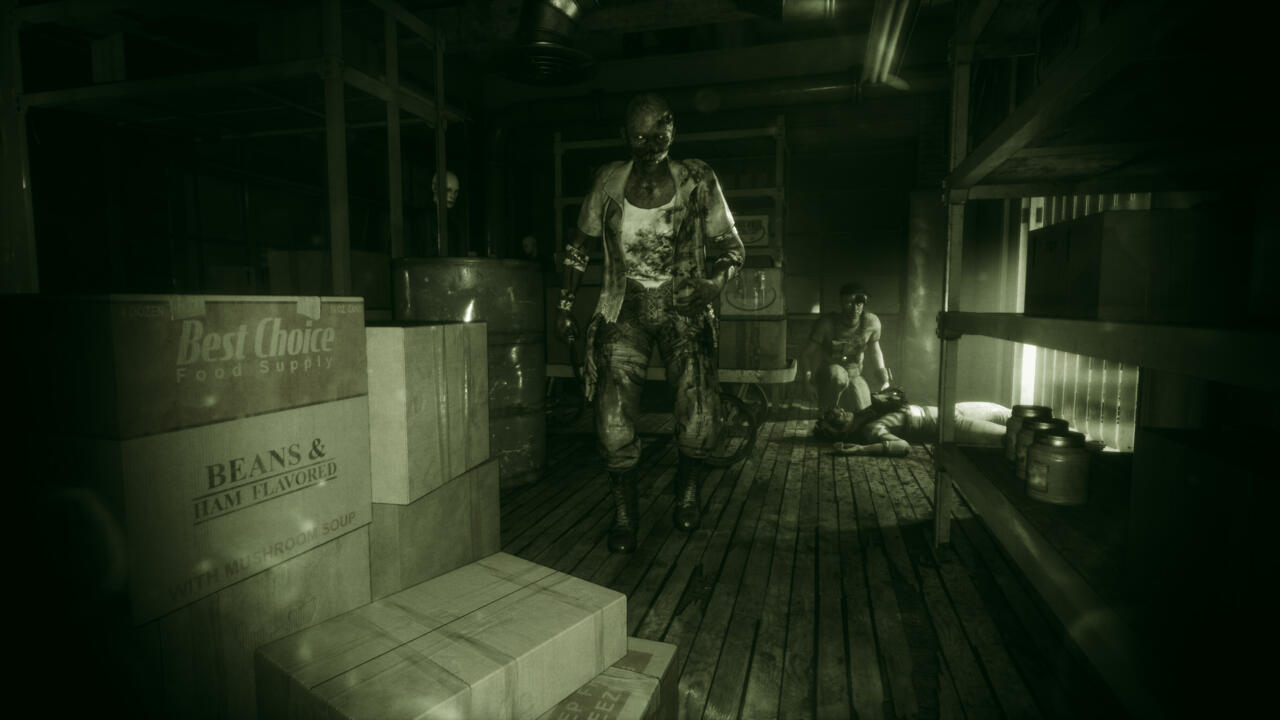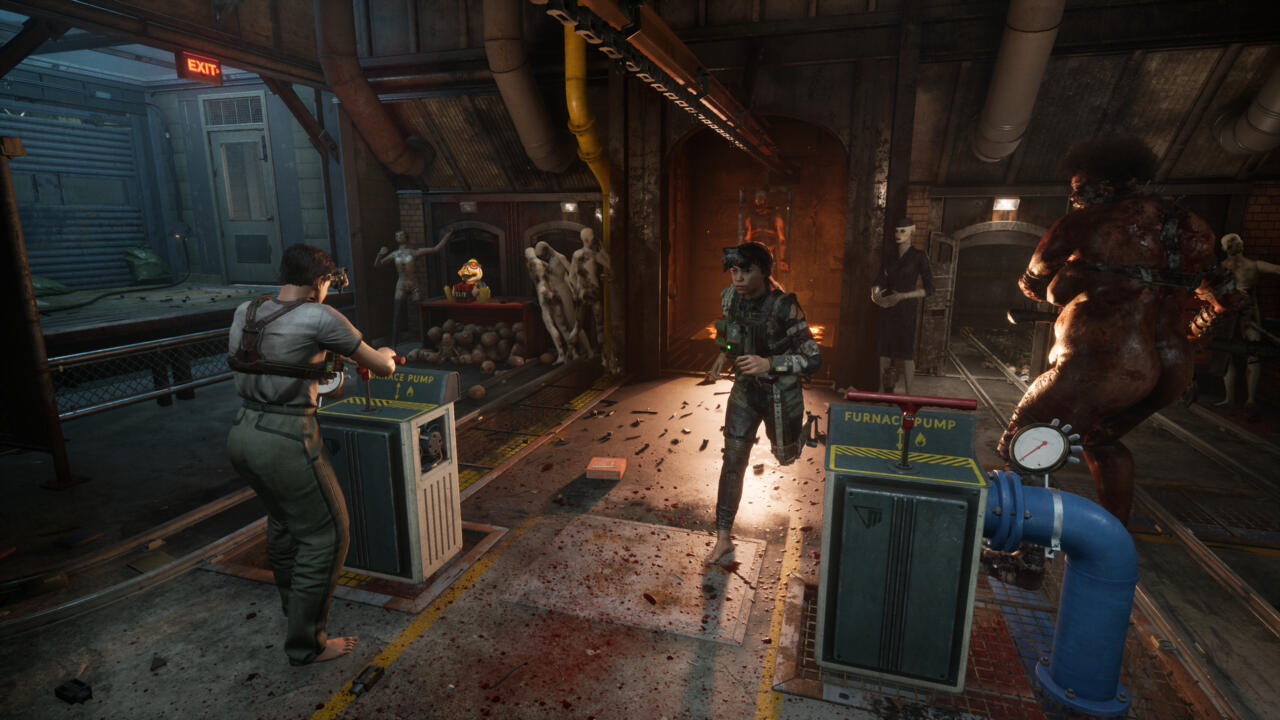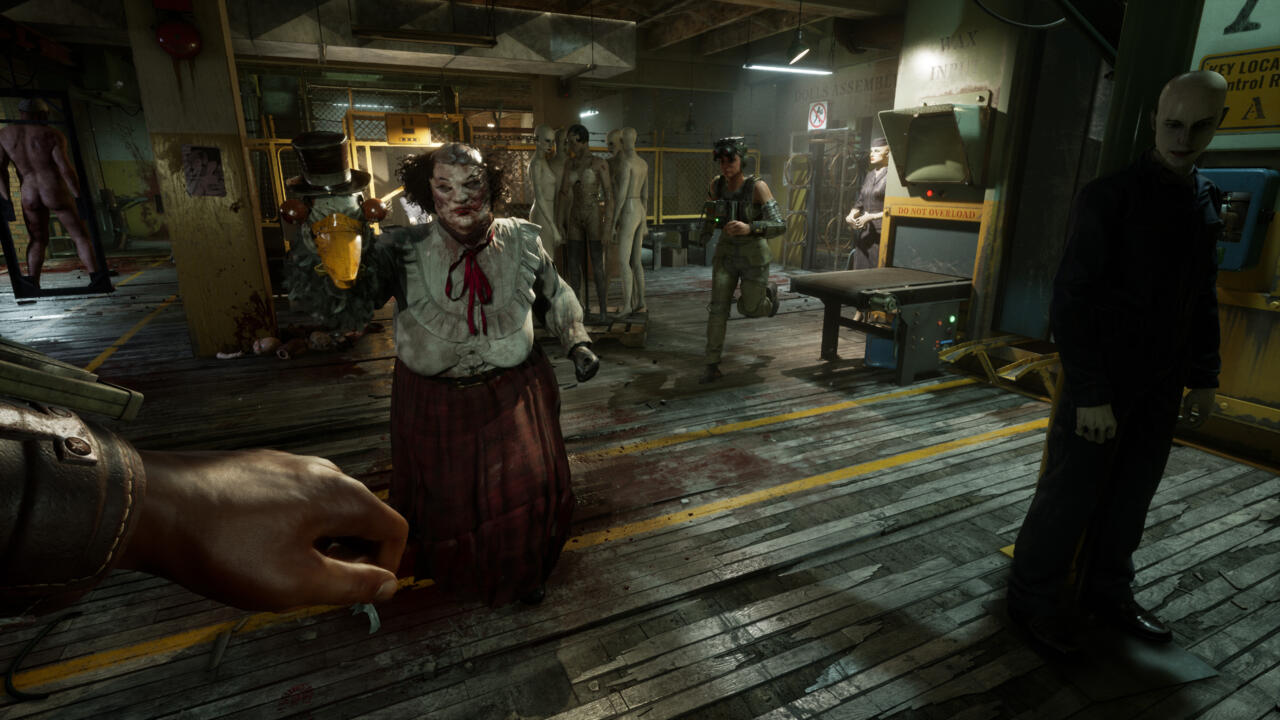One of the hardest reviews I've ever had to write was for Outlast 2. The game was so unnerving that it was hard to psych myself up enough to play it sometimes. The Outlast Trials, Red Barrels' first game since then, doesn't consistently reach those same heights, but it is memorably scary at times, and when it's not frightening, it's plenty rewarding in other ways. Taking a single-player horror series like Outlast and repurposing it as a four-player PvE game sounds like the kind of publisher-mandated live-service experiment too many teams have been tasked with lately. But as an indie team, Red Barrels seems to have steered its own course, and that may be why The Outlast Trials still feels like Outlast rather than a cynical project bearing the name.
The Outlast Trials is set in the Cold War, where you'll customize your figurative guinea pig for a lengthy series of vicious experiments within the Murkoff Facility. The game's opening moments, along with the lore, paint a scene so gruesome and wicked that'll be familiar to series veterans, but disquieting to those new to the Outlast universe.. After training to become sleeper agents who are psychologically deconstructed, tormented, and then brainwashed, you're eventually let back out into the free world awaiting your activation as a secret weapon. The context of your overarching mission is at least as dark as anything this team has done before--and it's set its bar quite high previously.
In practice, these experiments play out on various large maps like a police station, a courthouse, a carnival, and more. Each one is propped up as a facsimile of the real thing as you run through the Murkoff-made mazes like a lab rat. This involves many signature Outlast elements, none more emblematic than carefully crawling through the dark in first-person while desperately seeking salvation--or at least batteries--before your night vision runs out of juice.

Like its predecessors, The Outlast Trials is still very often set in the dark, but it uses the light more than its predecessors. It's a clever way to torture you. Though you'll often wish you could find that next battery pack before you have to resort to feeling around for walls in the dark, oftentimes you'll also need to move through well-lit areas, which betray you in the opposite way of making your escape obvious to patrolling enemies. It reminds me of how, in brutal heat, one may wish it were winter, but then in the snow, they may dream of summer. The light and dark are used to diversify the obstacles in your path, much like the noise traps, failed minigames, and naked giants looking to smash you into the carpet. Yes, what would an Outlast game be without monstrous men swinging their pendular arms and penises alike?
The minigames will seem familiar to players of other multiplayer horror games, like Dead By Daylight and The Texas Chain Saw Massacre. Starting generators or picking locks quickly but quietly is nerve-racking but implemented fairly, so that your screw-ups feel like your own and not the game forcing drama where it ought not have been. The minigames are challenging enough to provide the drama already, and the idea of a masterful or even perfect run--avoiding traps or failed minigames, taking no damage, and perhaps even never being sighted by enemies--is a fun reward to chase for players who play long enough to get acquainted with the game's more frightening bits.
You'll need to contend with all manner of vile AI enemies, including a prison guard all too happy to use his baton, a supernatural entity called The Skinner Man which haunts you whenever your mental state deteriorates, and Mother Gooseberry, a grotesque shattered-mirror version of a nursery school teacher who dons a face akin to Leatherface's Pretty Woman mask, but supplements it with an unnerving hand puppet duck with a menacing drill hidden in its bill. In Outlast, nearly every villain is an icon--this has long been true and continues in The Outlast Trials.
Furthering the game's uneasy feeling is the level of nauseating detail found in every corner of every map. Bodies are left crammed into trash cans, or quartered like a butcher shop's display. The walls are plastered with propaganda furthering your in-universe descent toward submission and brainwashing. Creepiest of all, and something I find to be a true stroke of horror genius, is that every map features Murkoff researchers clad in white lab coats observing you from behind safety glass. So while you may be running for your life, losing your mind, or bleeding out on a bathroom floor, the cold and cruel scientists simply observe and report. The Outlast Trials continues to prove its studio has a knack for being sincerely sinister.
One new wrinkle to this reimagined Outlast is that you can throw bricks and bottles to distract or briefly stun enemies. That's the simplest means of self-defense in a series that has only ever let you run and hide before. But the more evolved version of fighting back, built for a game that wants to be infinitely replayable like this does, is your rig--a cooldown-enabled special ability of your choosing with many upgrades to unlock slowly over time. There are a few different rigs, such as abilities to heal your team or throw mines that deploy smoke to cover your tracks, and the best use of any one of them is to combine it with those belonging to other players who may be loading into matches with different rigs than yours. Collectively, you are whole as a group.

This design winds up revealing that a more traditional Outlast is tucked away inside this multiplayer-focused prequel. Though many mission objectives scale for your team size, such as needing to turn on multiple generators in a pitch-black basement when you're on a team rather than needing to activate just one as a solo player, the game is nearly as scary as I found Outlast 2 to be when played alone. That's a good thing, as it means anyone turned off by the new direction of this series can still find something close enough to the classic Outlast experience if they want it.
Missions can take much longer when played this way too. A mission that might take 90 minutes solo can reliably be completed by a full team in a third of the time, in my experience. I'm fine with either case, depending on how I want to play at a given time, but it's frustrating that the always-online nature of the game means I can't truly pause it even when playing alone. I resorted to hiding in lockers, barrels, or under beds if I needed to step away for a moment, but that ran the risk of being kicked for inactivity.
The Outlast Trials becomes less scary with each additional person you add to your group. It's a little bit "strength in numbers" and a little bit "misery loves company." Simply put, the unimaginable horrors this game throws at you become more digestible the bigger your group is. When played with people you know, it can take the shape of a haunted hayride--the screaming becomes equal parts laughter and fright. It's fun to be vulnerable with your friends. The Outlast Trials isn't as scary with multiple people playing along, but it becomes a memorable time in a way previous Outlast games weren't intended or able to be.
Still, I do find this to be a strange outcome; the game designed for four players loses a lot of its horror luster if it's actually played that way. This review is based on the game's 1.0 build that launches on March 5, but both this week and in earlier sessions--some of them from months ago during the game's Steam Early Access run--I've experienced some missions in which everything was trivially easy because the three players I joined up with were, on some occasions, experts. It was like they had figuratively broken out of the boundaries set by the wretched facility and were able to game the system to max out rewards. To them, it became not a game of co-op horror, but a climb up a steep rewards tree.
That's not as satisfying to me, as someone who wants to play an Outlast game to be terrified, but it hasn't been common, thankfully. It's possible to have such an experience, but more often my team was composed of a few unlucky souls who struggled to do just enough to limp out of the exit doors before they shut for good. That's more like it, and thankfully more common.

Still, if you're going to chase that skill ceiling for the game's rewards, there are plenty. As each player builds up their character, unlocking new cosmetic decor for their personal "sleep room" and character, as well as new passive skills and rig abilities, it's quickly obvious just how numerous they are. There's not one skill I felt like I could do without, from learning to slide, to bashing open locked doors more quickly, to increasing my stamina or battery life. For most players, the odds will feel stacked against you, so choosing a new skill is both hard in a choice-paralysis kind of way, and also somehow easy too, since ultimately you really can't go wrong. Every improvement is welcome when you're otherwise so powerless. I wanted them all, and continue to chase some of them today.
Rewards are earned each time you level up, which would turn your victim into an overpowered super lab rat in time, except the missions do well to advance in difficulty alongside you, with endgame content and weekly limited-time missions that serve as out-of-reach rewards for many hours and eventually become the long-tailed excuse to return to the game regularly.
The game even uses an almost Call of Duty-like prestige system, in which you graduate a character through the endgame trial and release them into the world--in the lore this allows them to join society and await their activation phrase, which I find deliciously dark. You'll retain your unlocks and start anew with another character, or Reagent, which means this process is light on both rewards--the only such example in the game--and consequences, but at least the story justification is creepy. I only wish there was more story put front and center. Beyond this contextual understanding and an opening cinematic, you'll consume the narrative only via collectible text logs found in each level randomly.
The Outlast Trials is a surprisingly rewarding multiplayer horror game. It's capable of being as terrifying as previous Outlast games, and though you'll trade away some scares when playing with a bigger group, they're likely to be replaced by nervous laughs as you and your allies narrowly evade monsters in the dark. Surviving and returning to the hub facility means you'll then unlock great metagame content like more punishing missions and skills that are helpful no matter what you unlock. These gameplay loops are hard for seemingly most live-service teams to figure out, so it's especially impressive that a small, traditionally single-player horror studio found a formula that works so well.
It's initially jarring to witness an Outlast with things like cooldown abilities, cosmetic customizations, and upgrade trees, though it doesn't take long to appreciate this new look. The Outlast Trials, like the lineup of villains at the heart of it, wears many faces, but each of them is memorable.





